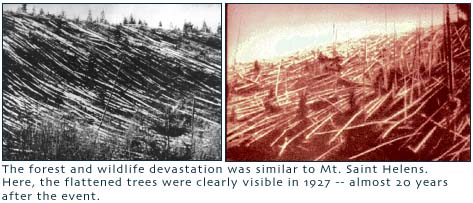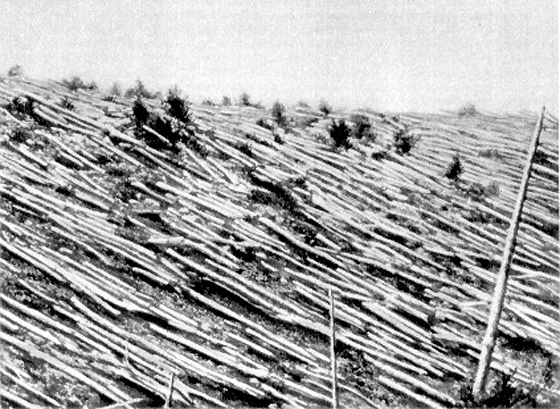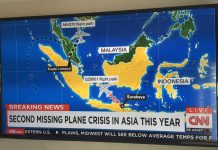UFO? Russian Missile ? Fireball ? Meteor ?
At dawn on a summer day 103 years ago on the banks of the river Podkamennaya Tunguska, Siberia. The first rays of sun warmed the pine forest wild and wet ponds, when the sky exploded and the ground felt its fury.
Around 7:15 that morning June 30, 1908 a shock wave about a thousand times stronger than the Hiroshima bomb devastated 80 million trees over 2,000 square kilometers of forest. Reindeer, bears, wolves, foxes and thousands of other animals fell along with the vegetation the area never fully recovered himself. The Tunguska explosion was the biggest impact that Earth suffered throughout the history of civilized man. Similar events, even in ancient times, remained unknown until the advent of satellites.Although the epicenter was deserted, people in hundreds of places in Asia and Europe witnessed the incident. The stories were remarkable. Strong heat waves, intense winds, horrific crashes and earthquakes were reported. Many saw a ball of fire and its tail in rushing smoky horizon.The night sky was glowing for weeks, as the amount of dust released into the stratosphere by the blast. In London, more than 10,000 km, one could read a newspaper at night, with only this light. Across the ocean, the Smithsonian American Observatory recorded a decrease in atmospheric transparency that lasted for months.

eventWhat happened? Of course there was much curiosity as much as lay scientists. But the first expedition to examine the region left more than a decade later, in 1921. On occasion, the Soviet geologist Leonid Kulik failed to achieve the exact location, and deduced that the event was due to fall of a large meteorite. This hypothesis eventually persuaded the Soviet government to fund another expedition in 1927, attracted by the possibility of finding a meteorite iron of commercial value. But no crater was found, much less a meteorite. Other expeditions have confirmed this lack. It was calculated that the magnitude of the blast was between 10 and 15 million tons of dynamite. But the object that caused it has not touched the ground, smashing into the air, about 8 km high. Until now the most intense event similar happened in 1930 on the river Corucia, Amazonas, reaching a maximum energy of one million tons of dynamite. Rejected the assumption of a meteorite, but taking into account the reports of the fireball, a hypothesis emerged even more spectacular – and most likely: in 1908, a piece of comet collided with Earth.
What really caused it?
Comet or asteroid?
A comet is made mostly of ice. Ice water and a little methane and ammonia. Upon entering Earth’s atmosphere a small comet is usually evaporates before touching the ground, yet could produce a bright fireball and a powerful shock wave and heat, to raze the surface without leaving an impact crater. The only traces in the soil were very small diamonds and tiny spheres of glass (silica), with high concentrations of iridium and nickel, which would prove the extraterrestrial origin. Tunguska expeditions sent in 1950 found just such evidence. Much more recently, in 2007, Mark Boslough and his group at Sandia National Laboratories first used supercomputers to simulate in three dimensions the Tunguska event. The strategy resulted in an entirely new framework. And scary.
Before, it was assumed that a piece of comet the size of a football field, weighing a million tons and moving at 108,000 km / h would have caused the explosion. However, the simulations suggest that a small asteroid would have the same effect.
The projectile would be increasingly compressed by the increasing resistance of Earth’s atmosphere, to the point where they explode in the air, producing a violent flow of heated gas that would continue the path to the ground. The estimates now range from 3 to 5 million tons of dynamite enough energy to cause the shock wave of Tunguska. The study of the Sandia lab enhances our understanding of the mechanism of explosion, but he warns. The number of potentially hazardous asteroids is much larger than that of comets. Whatever it is, the possibility to happen again requires the preparation of a good defense strategy. Because the Earth’s rotation, if the collision had occurred in Tunguska about 4 ½ hours later, the city of St. Petersburg, former capital of the Russian empire, would have been wiped out forever.
For 100 years the world population has hovered around 1 ½ billion people. Today we are almost 7 billion, occupying more space, especially in coastal areas. The destructive potential of a new Tunguska is incalculably greater. Worse still occur over the sea. And the question is not whether it will happen again, but when.
Nikola Tesla?














